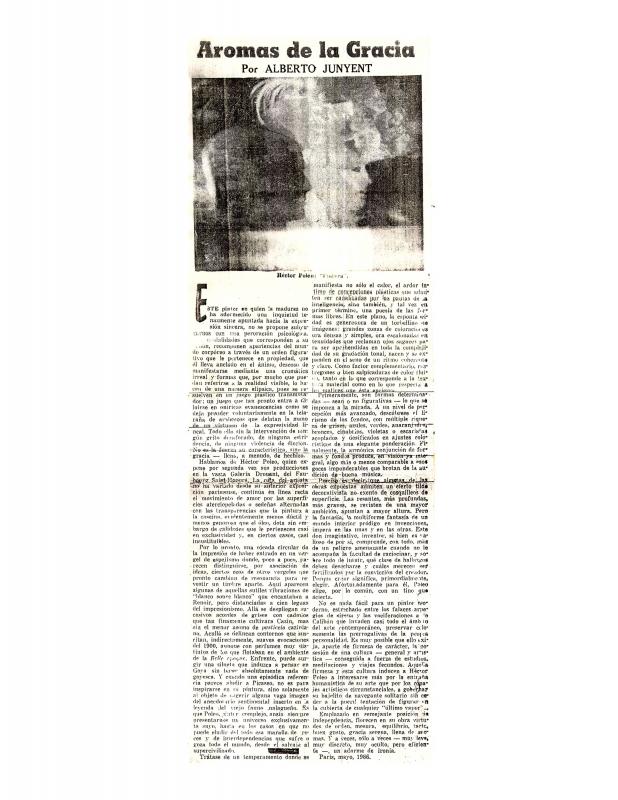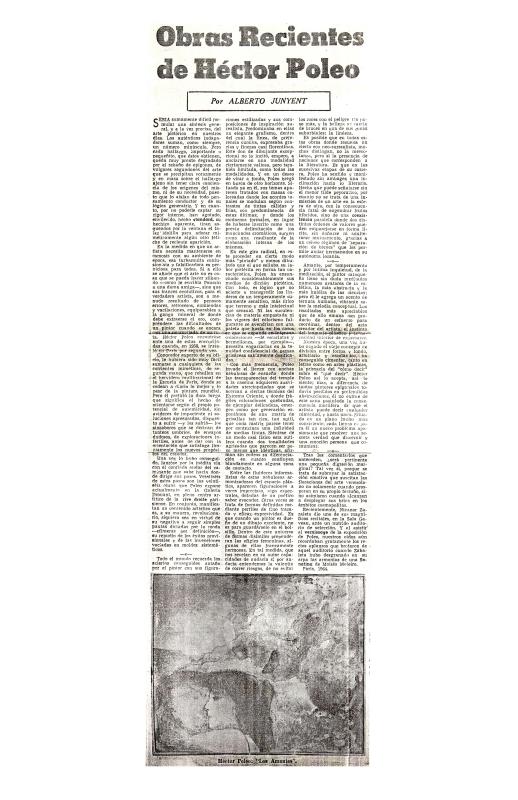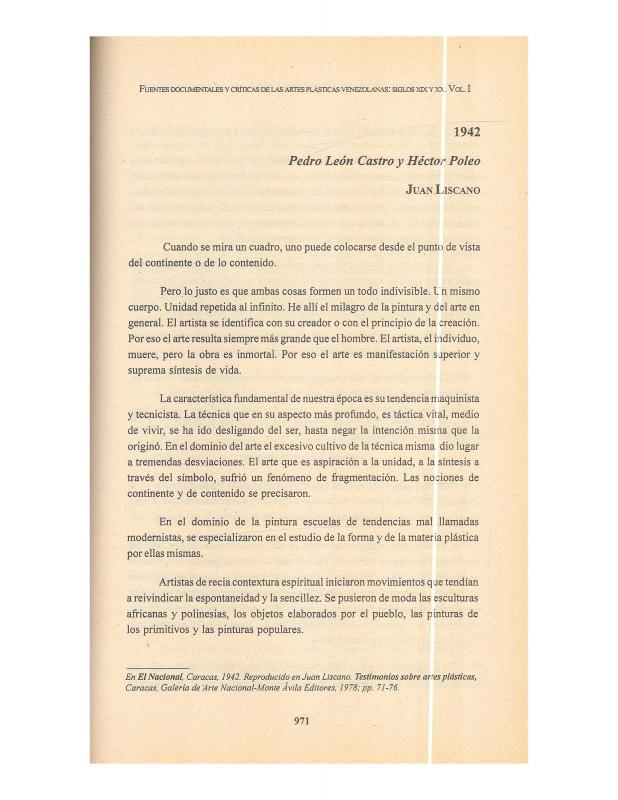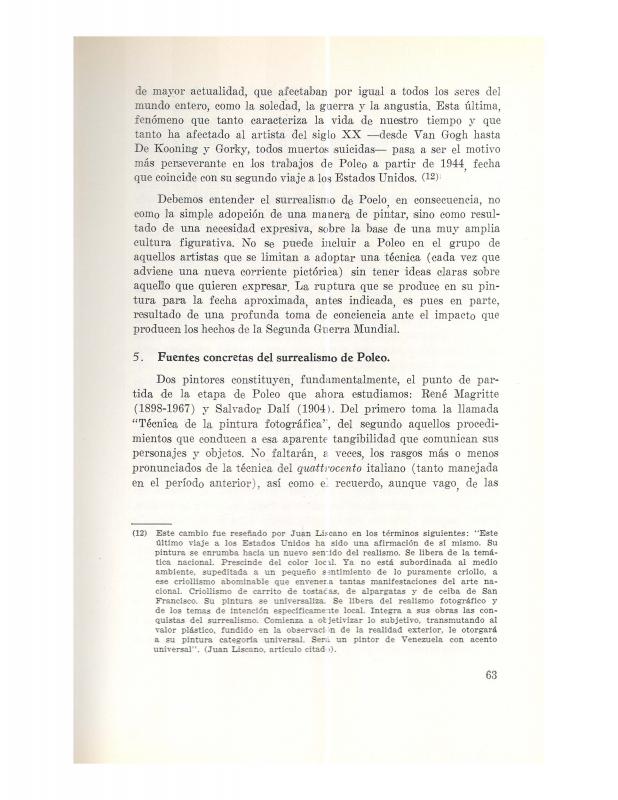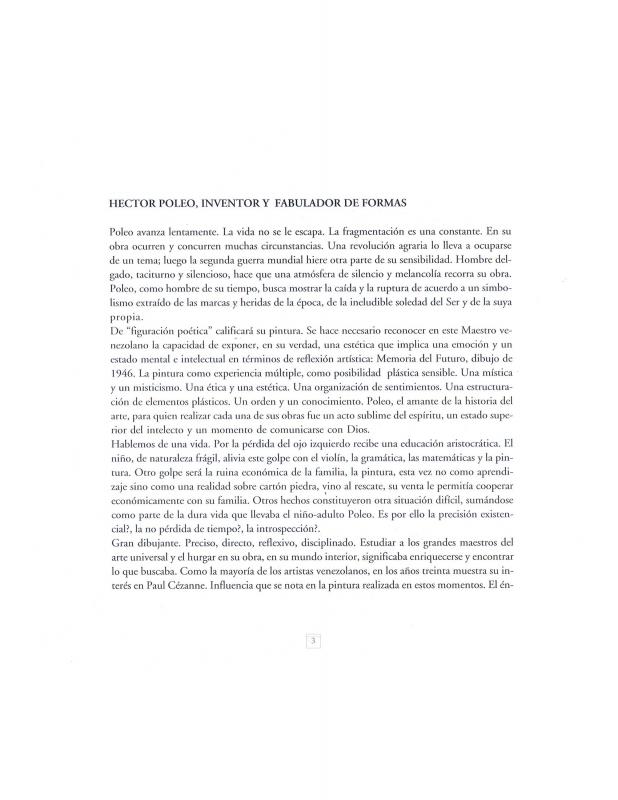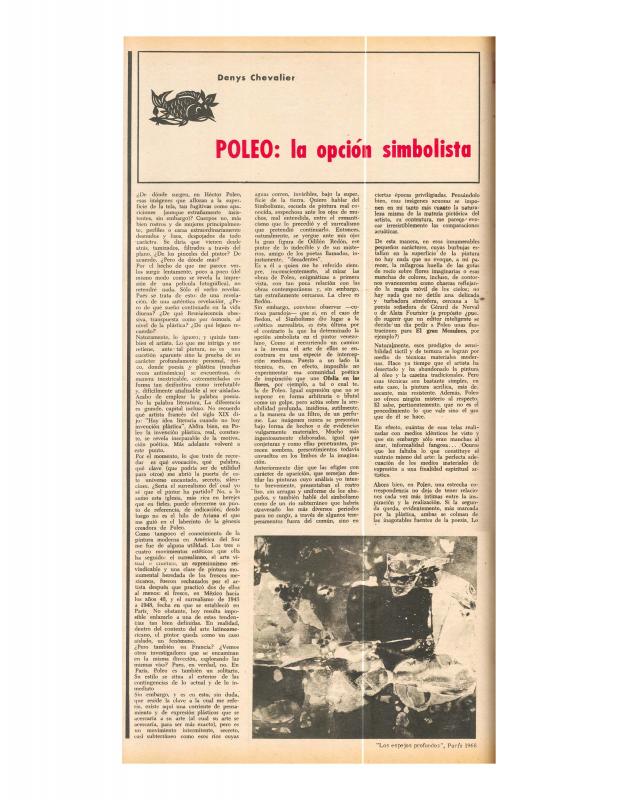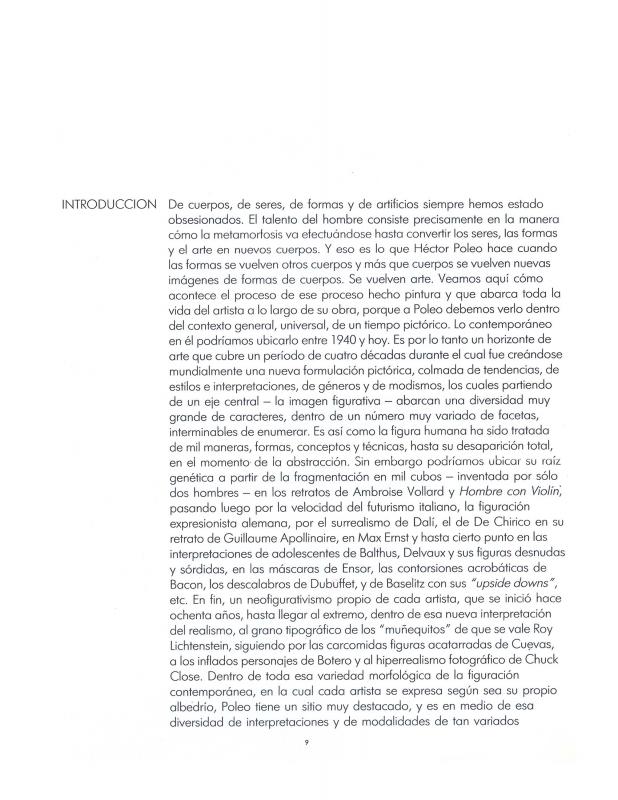“El tema de la figura humana en la obra de Héctor Poleo” is the title of the introductory essay written by the Venezuelan historian and art critic Alfredo Boulton (1908–95) and published in the catalogue for the retrospective exhibition of works by Héctor Poleo (1918–89) at the Museo de Bellas Artes de Caracas (1974). It is a document of great importance in terms of an understanding of Poleo’s painting up to that point, and in terms of his later works. Boulton discusses Poleo’s anthropological approach to his work, suggesting that the artist’s tendency to question reality—which can be seen in his painting and with which he addresses humanity’s existential drama—is one of his overwhelming attributes.
This is the largest and most complete collection of Héctor Poleo’s work that has ever been organized in Venezuela. The exhibition includes over four hundred paintings and drawings, jewels, and sketches for stained glass windows and tapestries; the catalogue is very generously illustrated. Supported by a similar catalogue, the exhibition was later shown at the Museo de Arte Moderno in Mexico City and at the Center for Inter-American Relations in New York. It should be noted that the essayist was a very good friend of the artist’s and was genuinely interested in Poleo’s work. The catalogue also includes an essay by the writer and journalist Miguel Otero Silva.
For other material about Poleo, see the reviews by Alberto Junyent “Aromas de la gracia” [doc. no. 1153851] and “Obras recientes de Héctor Poleo” [doc. no. 1153835]; the article by Juan Liscano “Pedro León Castro y Héctor Poleo” [doc. no. 850175]; the article by Simón Noriega “Fuentes concretas del surrealismo de Poleo” [doc. no. 1153819]; the article by Bélgica Rodríguez “Héctor Poleo, inventor y fabulador de formas” [doc. no. 1153899]; the essay by Denys Chevalier “Poleo: la opción simbolista” [doc. no. 1162167]; and Boulton’s other article, “Introducción” [doc. no. 1153883].

